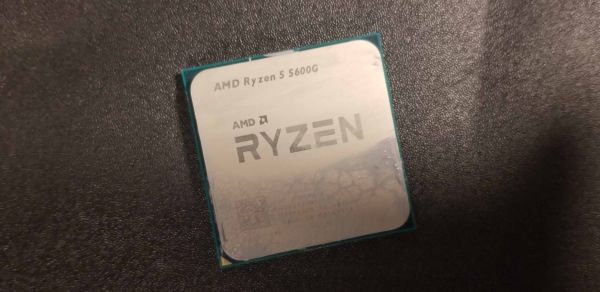Why you can trust Tom's Hardware
AMD Ryzen 5 5600G Discrete GPU Gaming Performance — The TLDR
AMD positions the Ryzen 5000G chips as the "non-X" equivalents for the Ryzen 5000 family, so some enthusiasts will buy the 5600G as the non-X equivalent to the 5600X that requires a discrete GPU. Additionally, if the GPU shortage continues, it might be a good idea to use the 5600G's iGPU as a stopgap until you upgrade to a discrete GPU later. Even though it certainly seems counterintuitive with an APU, both of these use-cases dictate that we should analyze how the chip performs with a discrete graphics card.
Below you can see the geometric mean of our gaming tests at 1080p and 1440p, with each resolution split into its own chart to give us a decent overall view of the current landscape. As usual, we're testing with an Nvidia GeForce RTX 3090 to reduce GPU-imposed bottlenecks as much as possible, and differences between test subjects will shrink with lesser cards or higher resolutions. These are cumulative metrics, so individual wins vary on a per-title basis. You'll find the game-by-game test results further below. Some of these same benchmarks appeared in our integrated GPU testing above, but we used higher quality settings for the tests below.

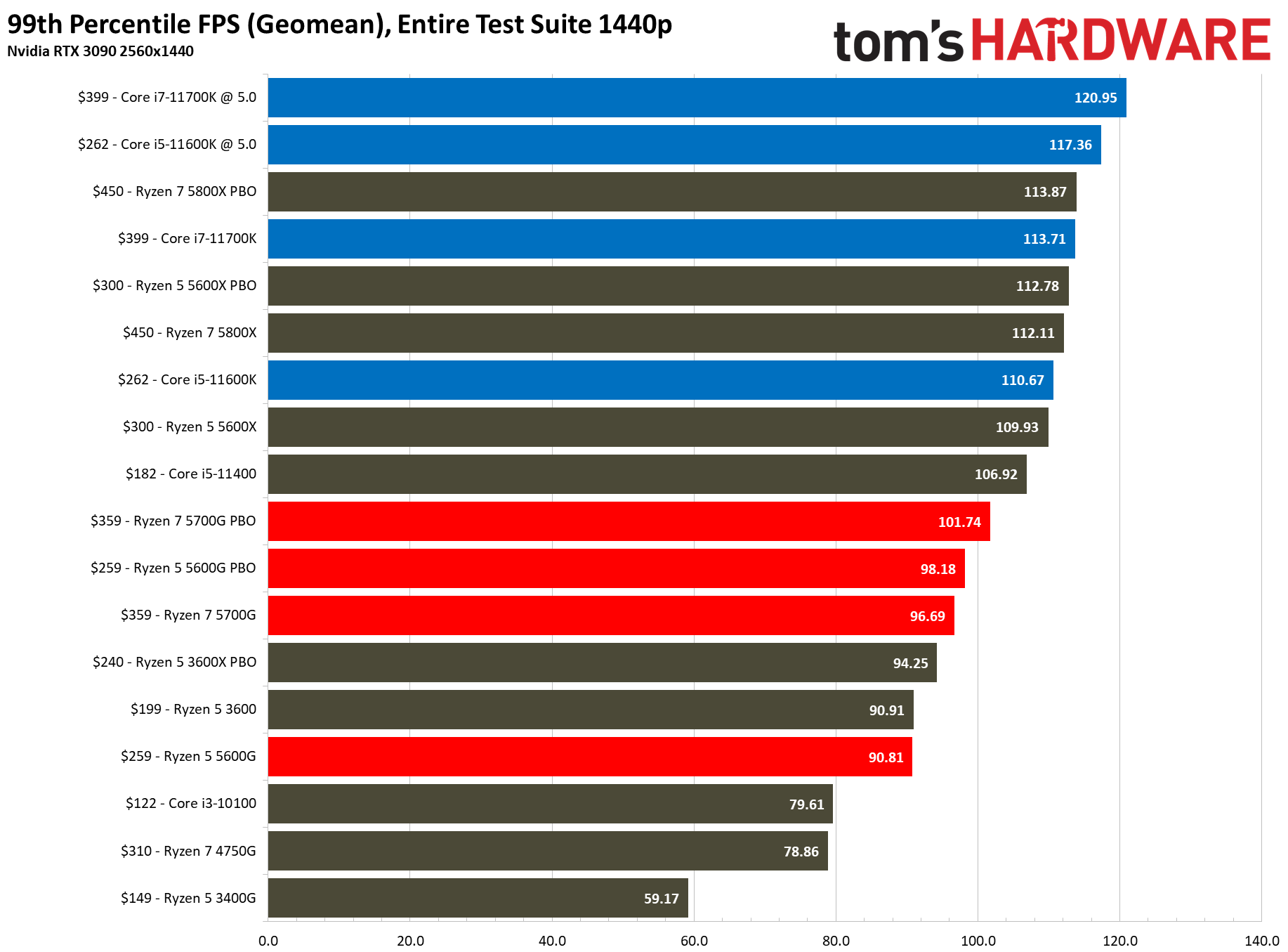
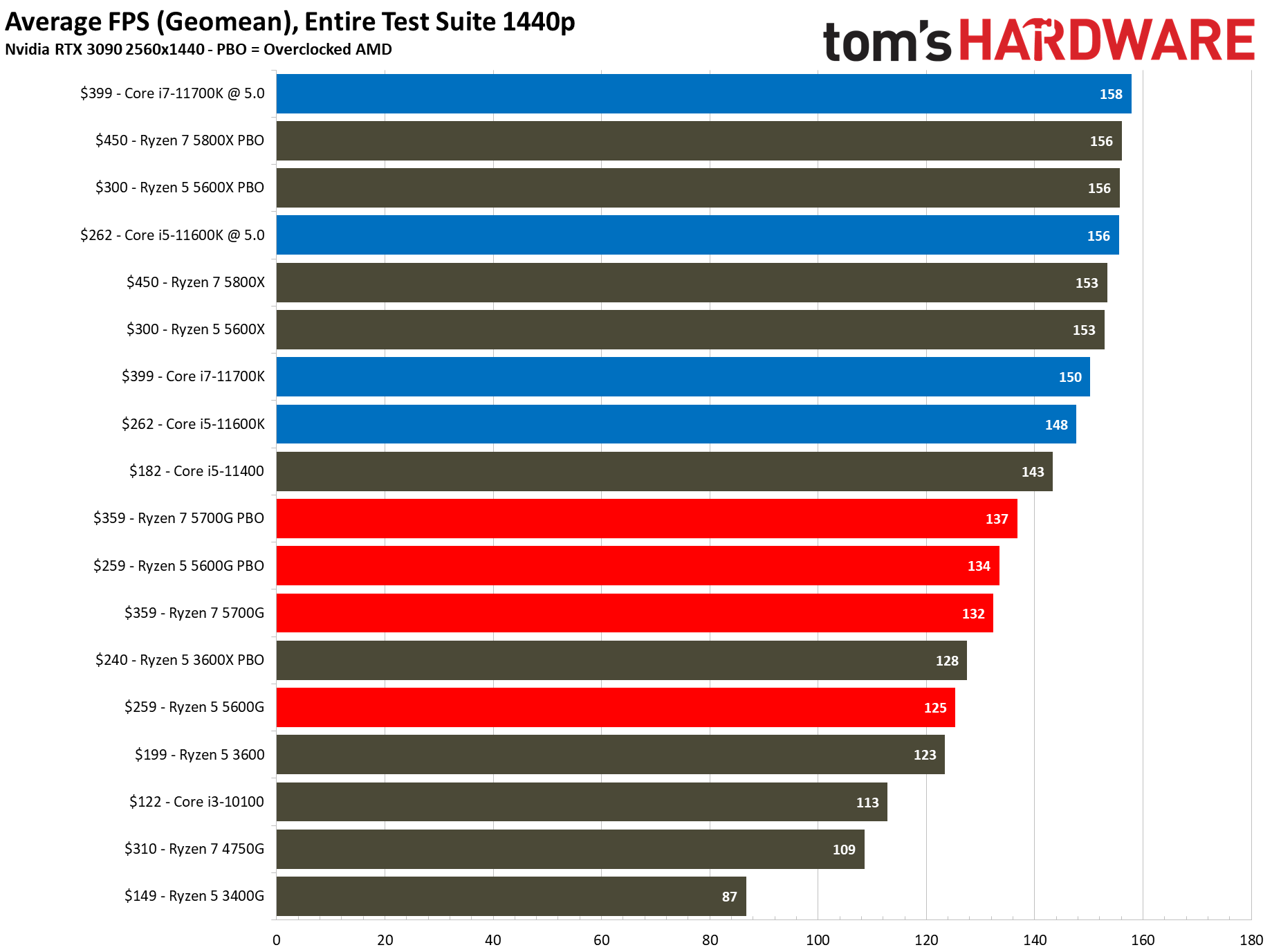
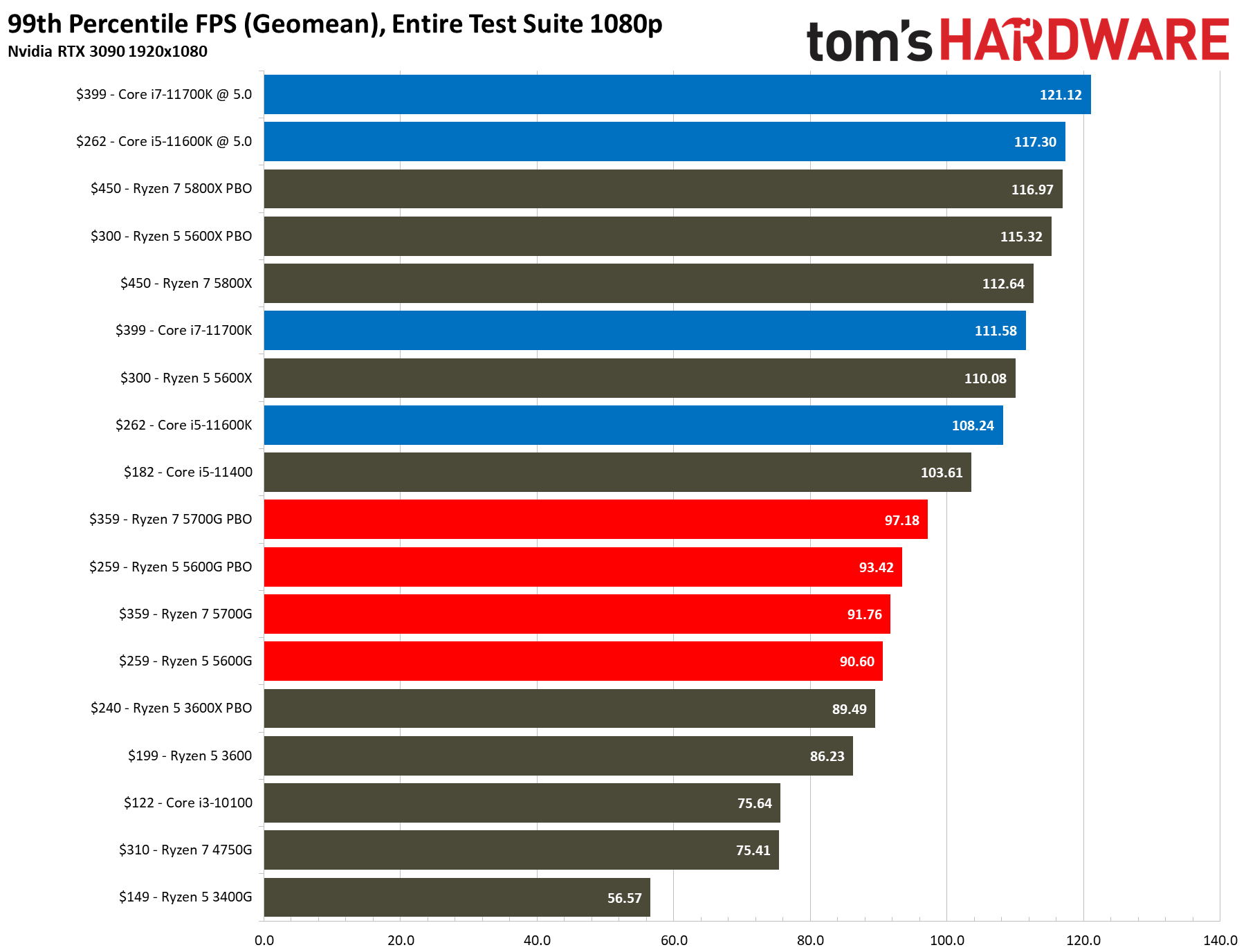
| Row 0 - Cell 0 | 1920x1080 | 2560x1440 |
| Ryzen 7 5800X / 5600X | 100% | 100% |
| Core i7-11700K | 95.2% | 98% |
| Core i5-11600K | 92.8% | 96.7% |
| Core i5-11400 | 89.2% | 93.5% |
| Ryzen 7 5700G | 84.3% | 88.9% |
| Ryzen 5 5600G | 79.5% | 84.3% |
| Ryzen 7 4750G | 64.5% | 71.2% |
| Ryzen 5 3400G | 50.6% | 56.9% |
Here we can see how the chips stack up using the Ryzen 7 5800X and Ryzen 5 5600X (they're nearly identical in gaming) as the baseline.
One of the primary reasons to buy a reduced-TDP 'non-X' AMD chip is that overclocking typically brings the non-X chip within range of the more expensive X model. That's exactly why the now-legendary Ryzen 5 3600 is so popular.
It's easy to see that the Ryzen 7 5600G doesn't gain enough dGPU gaming performance via overclocking to match the stock Ryzen 7 5600X. As such, you should keep your expectations in check if you're purchasing this chip as a cheaper non-X alternative for gaming.
Again, the Ryzen 5 5600G gives you the lion's share of the Ryzen 7 5700G's performance, landing within 5% at both resolutions (we'll discuss a caveat below). In addition, the Ryzen 5 5600G is faster than the Ryzen 5 3600 in these CPU-heavy tests, so it will provide a bit more runway with a dGPU than the less-expensive Zen 2-powered 3600.
We did catch one seemingly anomalous result in our testing: The Ryzen 7 5700G is 32% faster in Borderlands 3 at 1080p than the Ryzen 5 5600G on our test bench, and we retested it several times to confirm. That stands in contrast to the performance delta between the two chips in other titles, spanning from a tie to a 4% difference.
When paired with a higher-end dGPU, the 5600G lags the stock Intel processors significantly. Overclocking reduces that delta, but the Ryzen 5600G doesn't match the overclocked Intel comparables on a like-for-like basis.
We'll skip the blow-by-blow analysis in the individual game results below because, aside from Borderlands 3, the results are fairly redundant and this certainly isn't the primary target market for these chips.
3D Mark, VRMark, Stockfish Chess Engine on AMD Ryzen 5 5600G
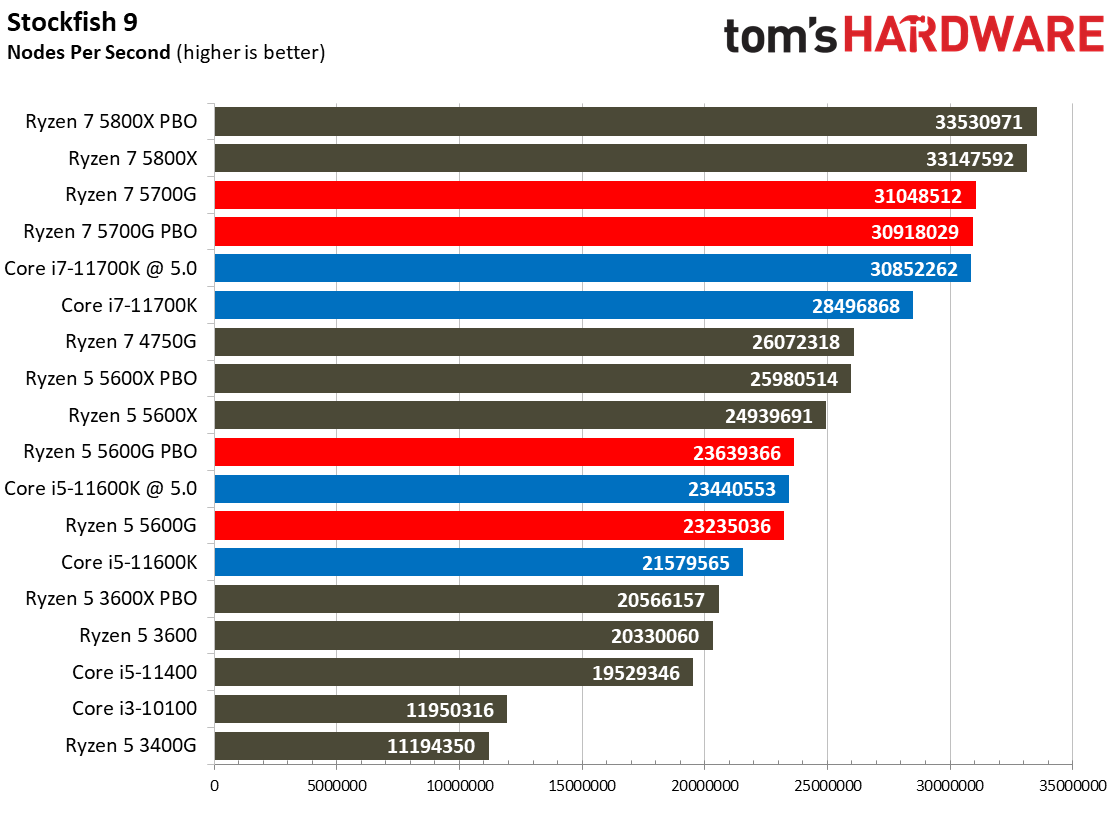
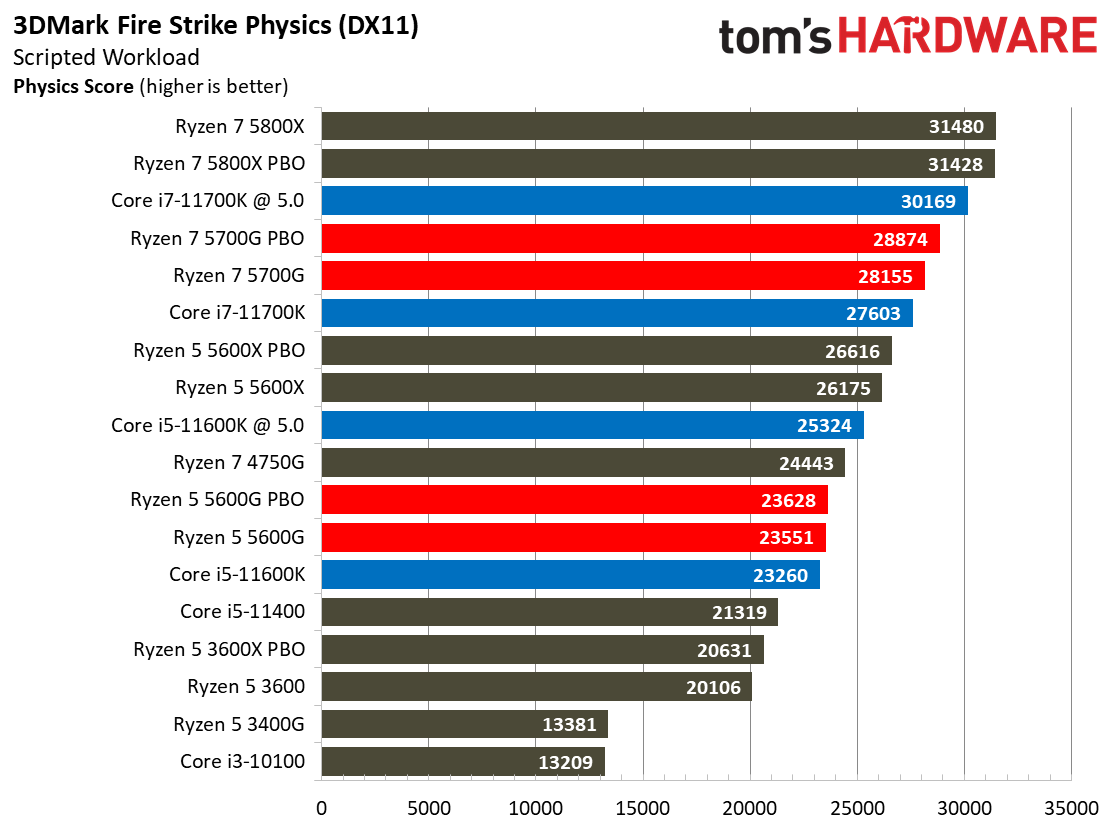
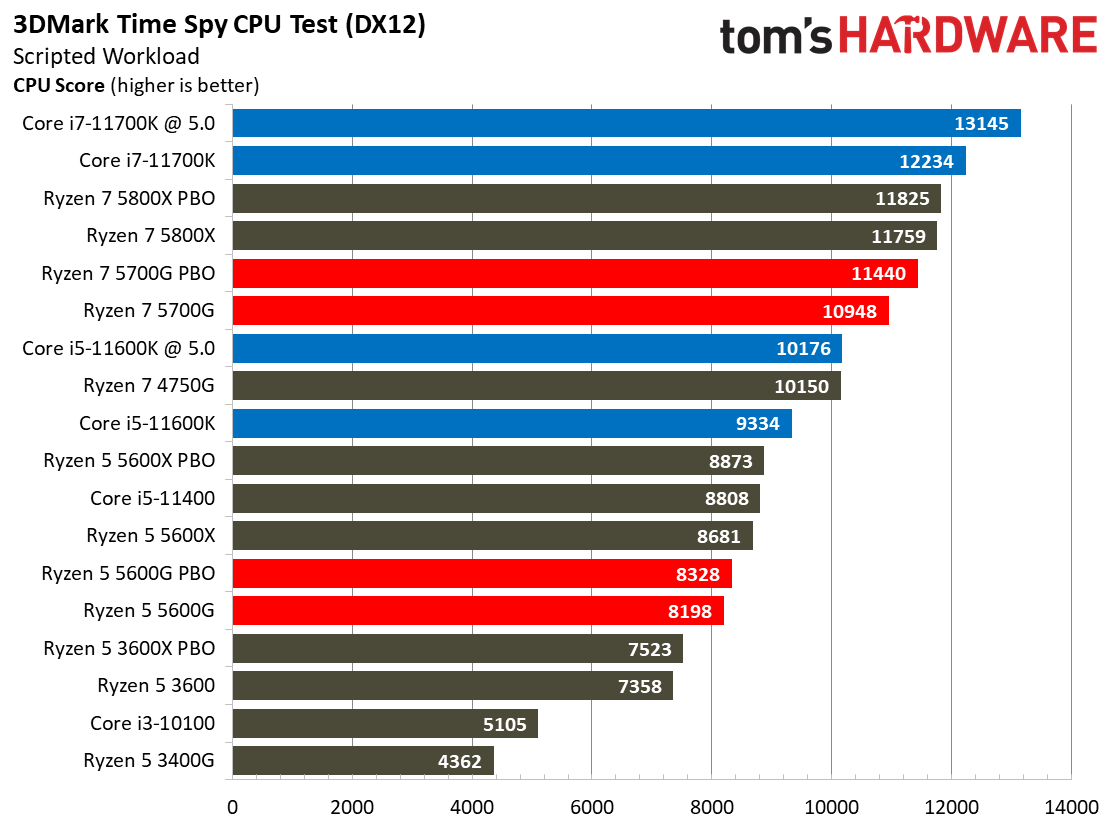
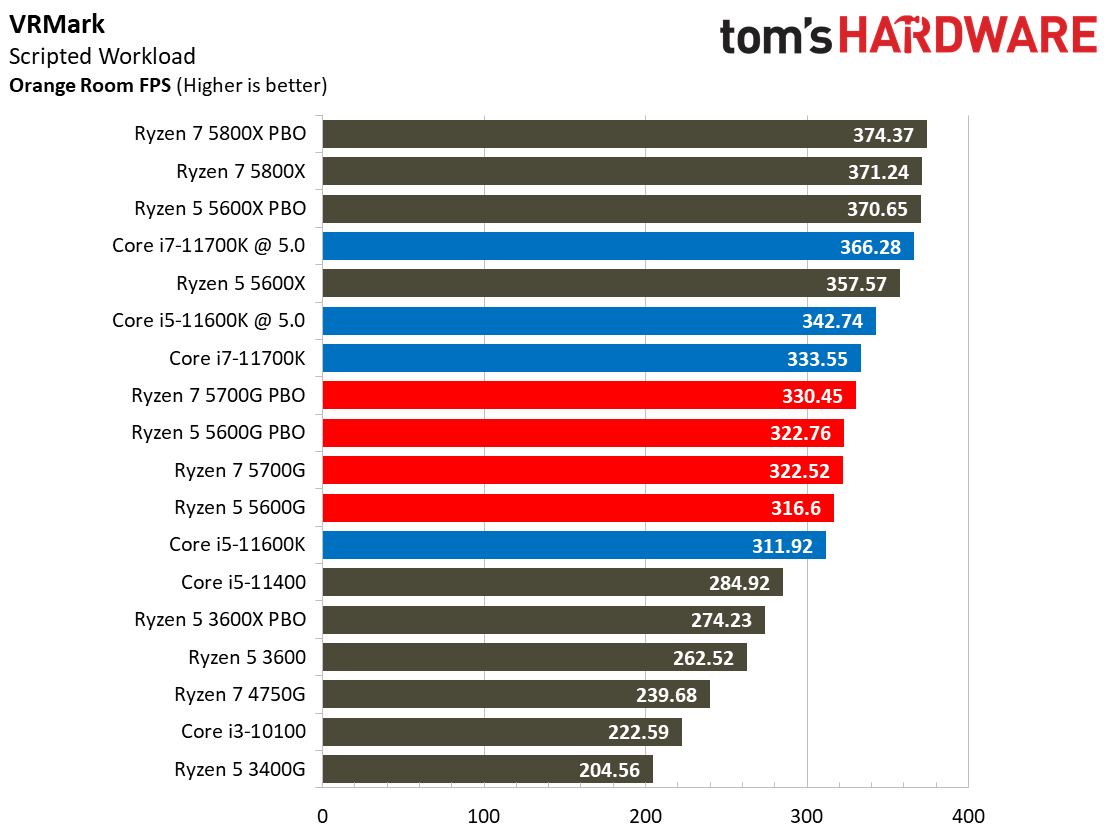
Borderlands 3 on AMD Ryzen 5 5600G
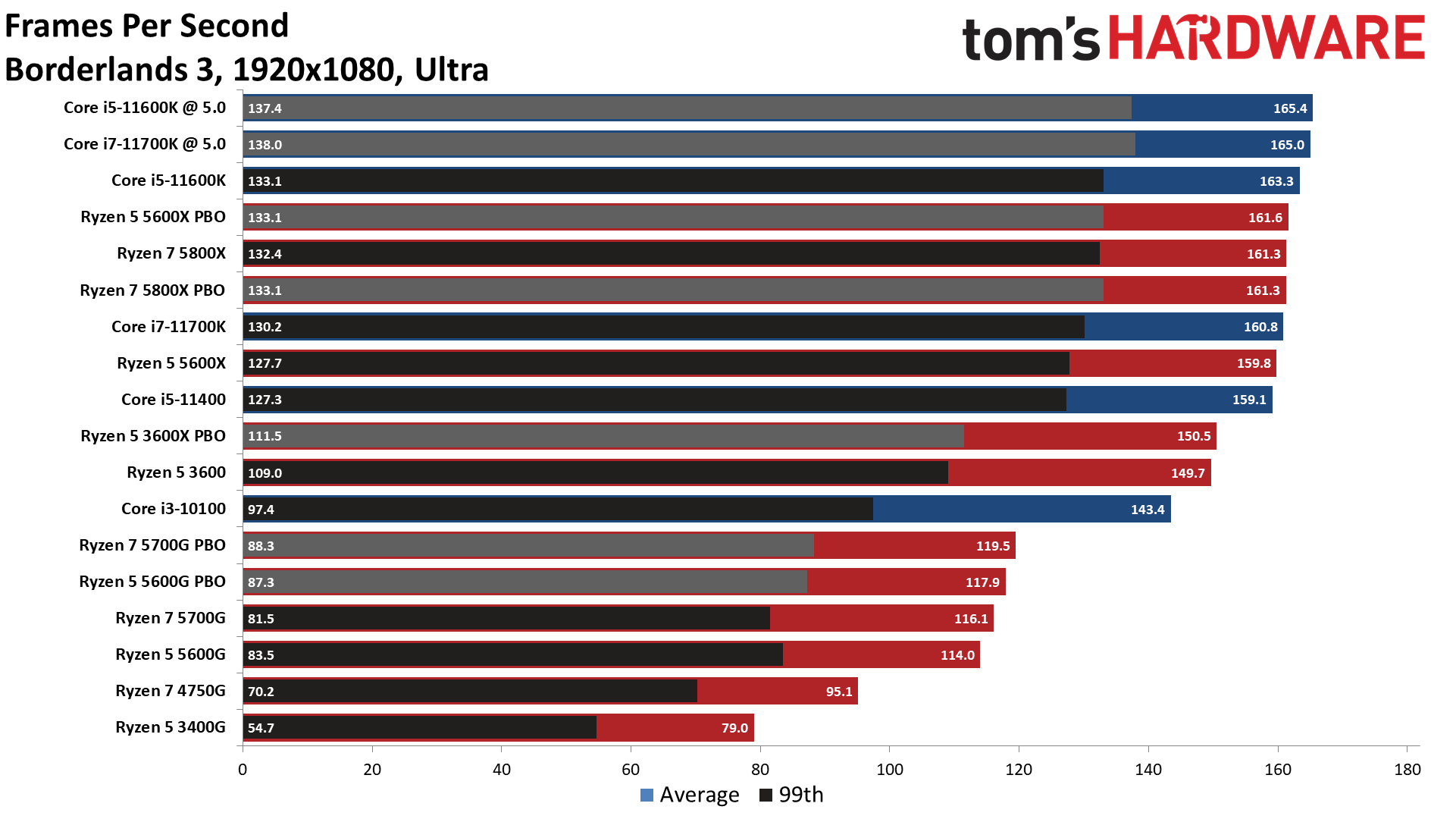
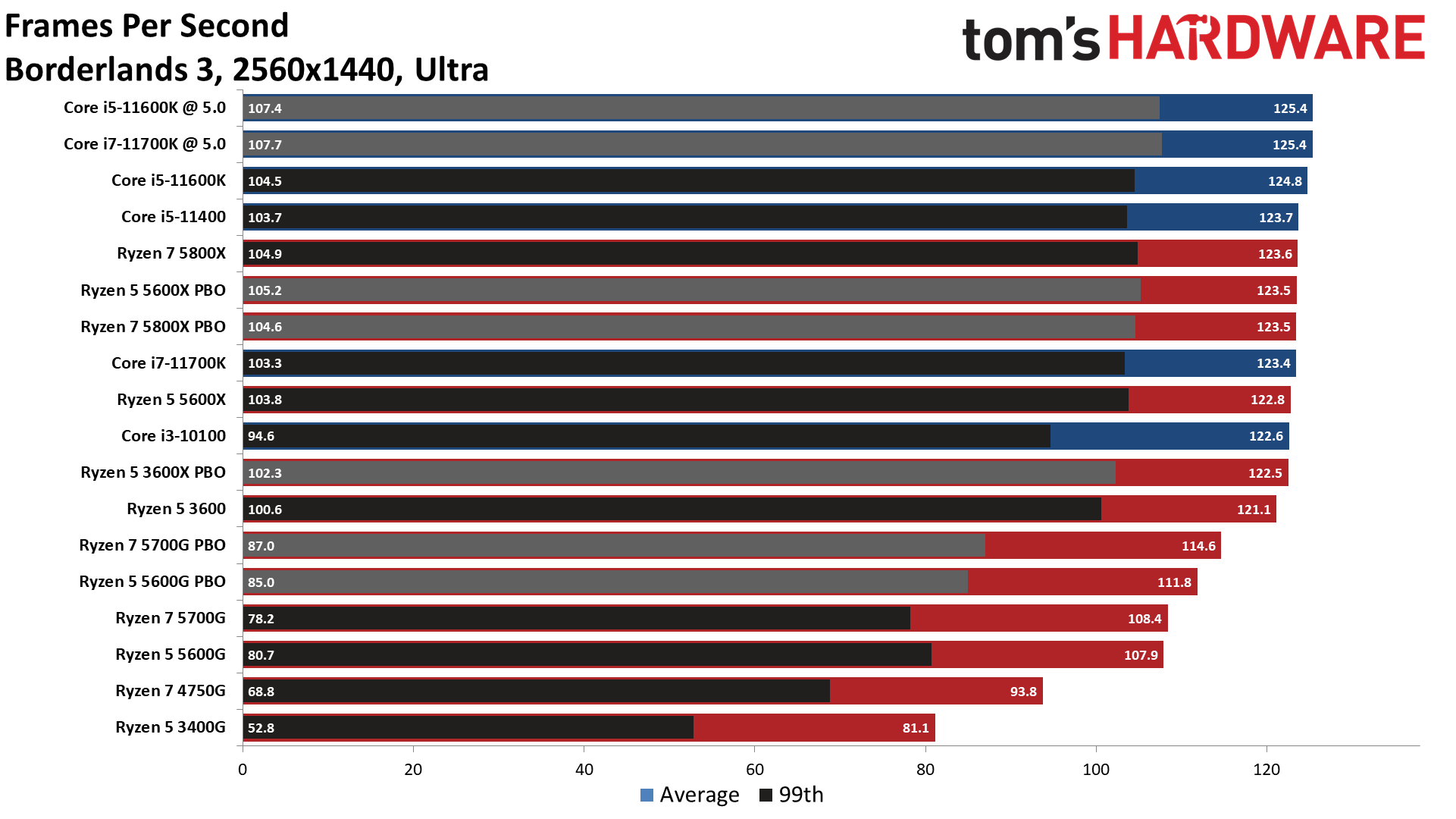
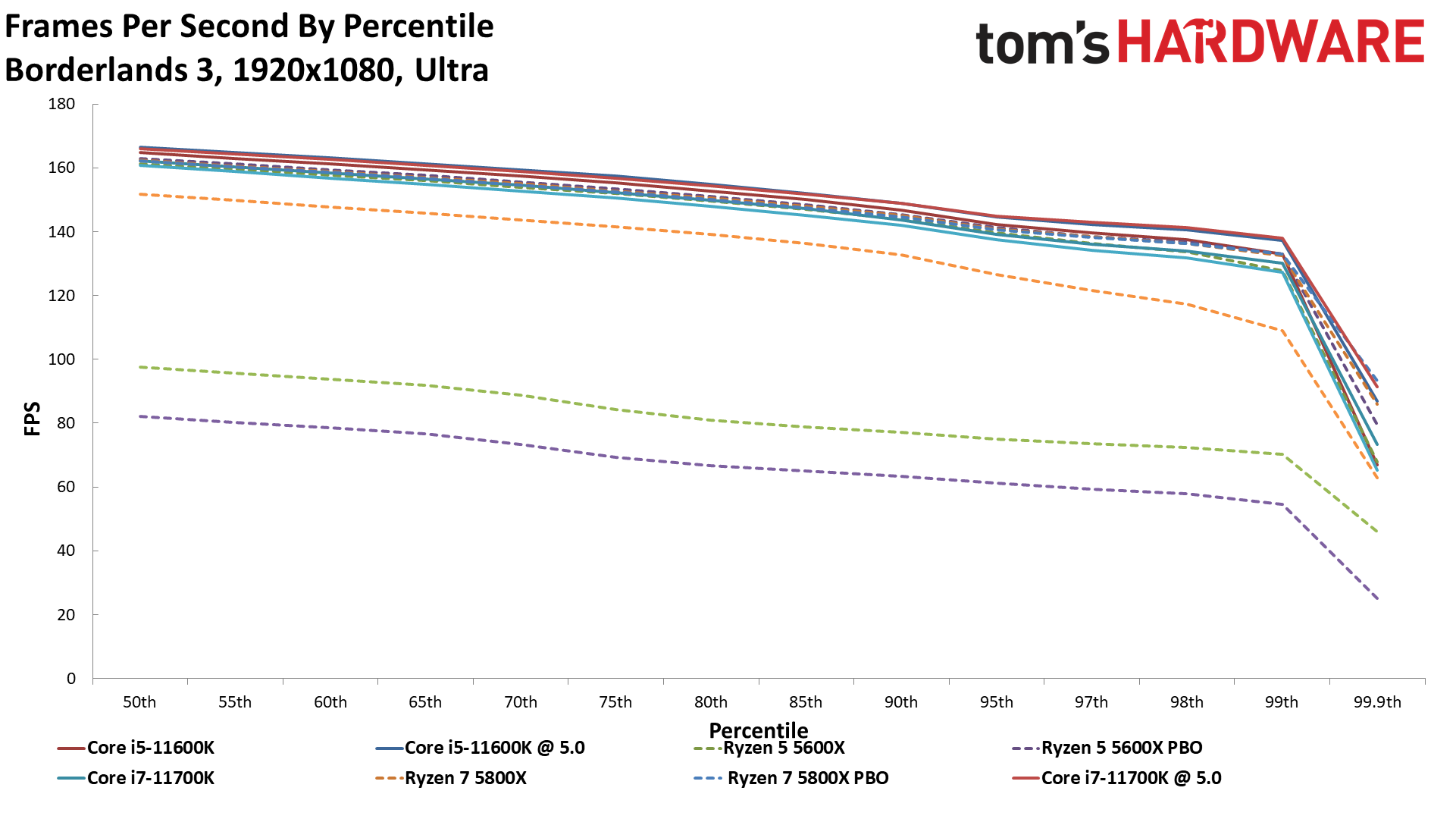
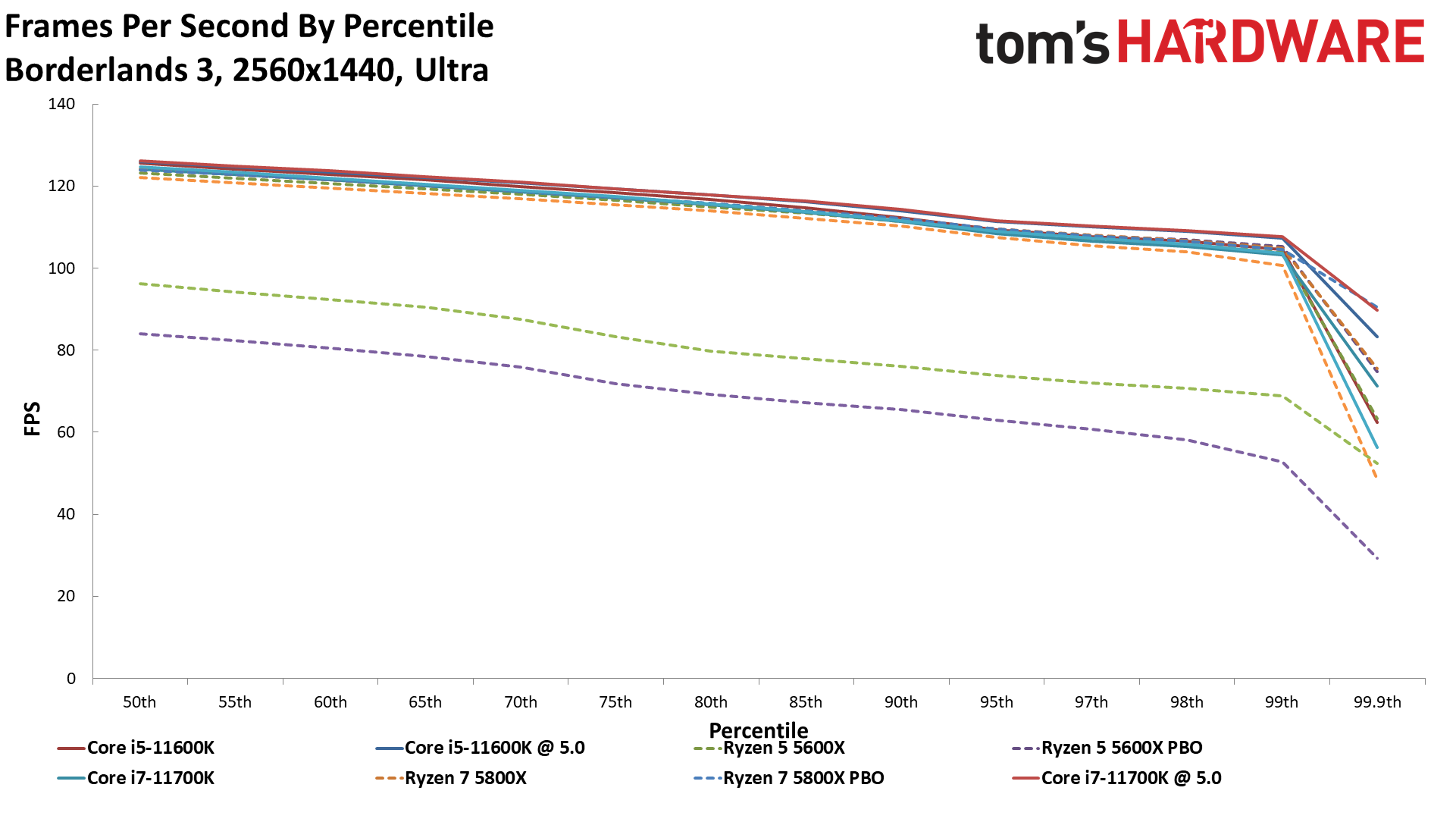
Far Cry 5 on AMD Ryzen 5 5600G

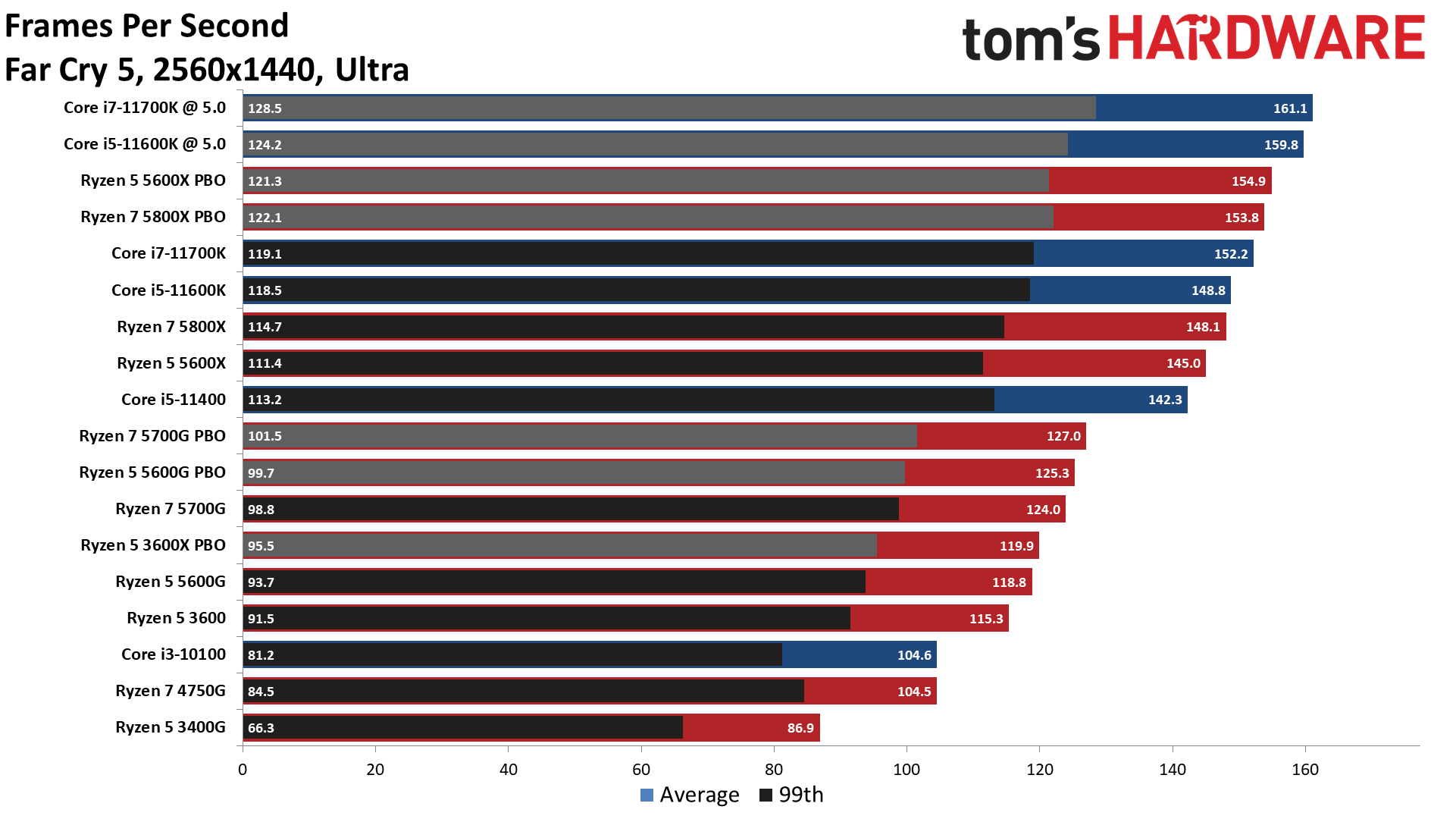
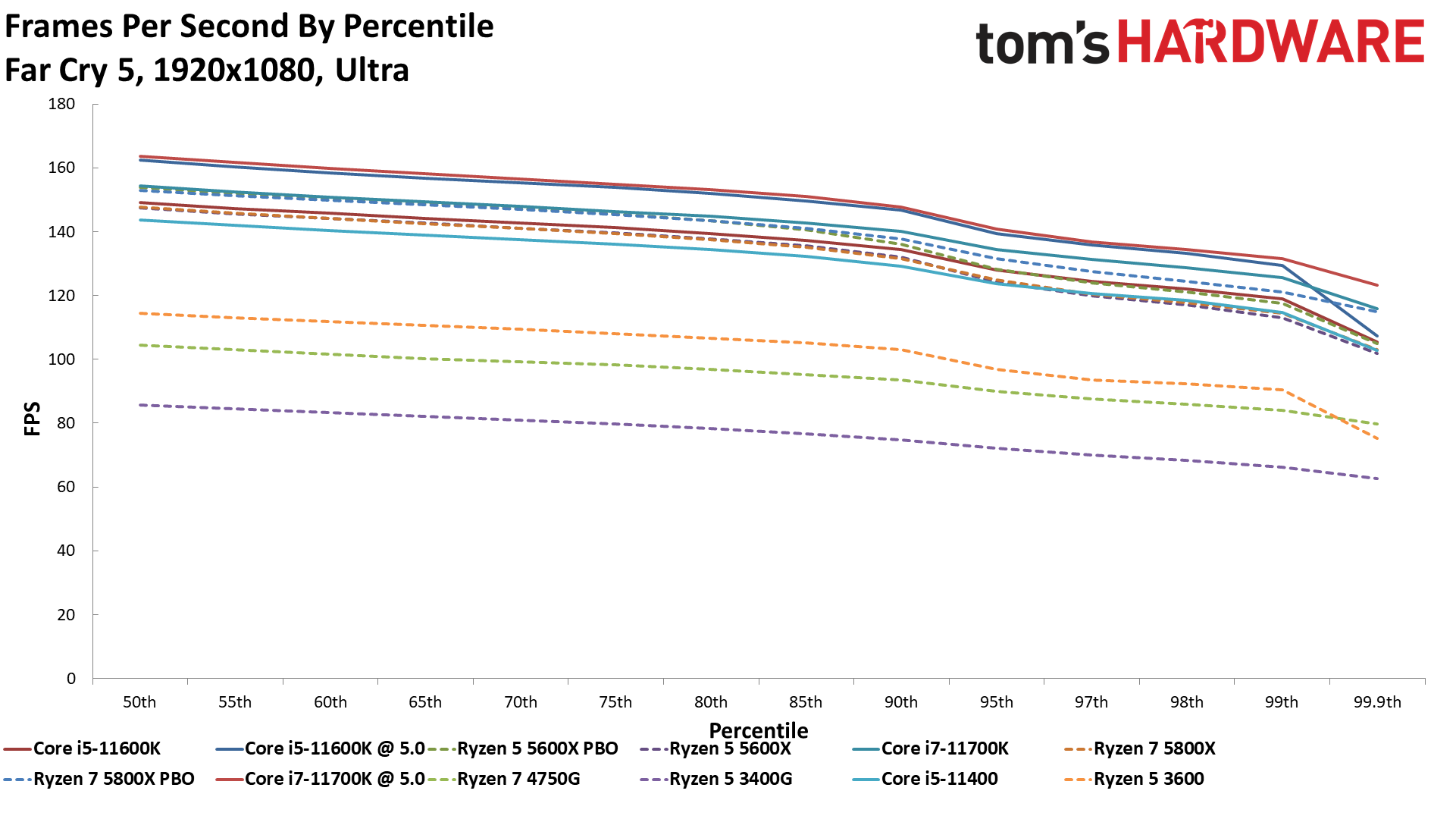
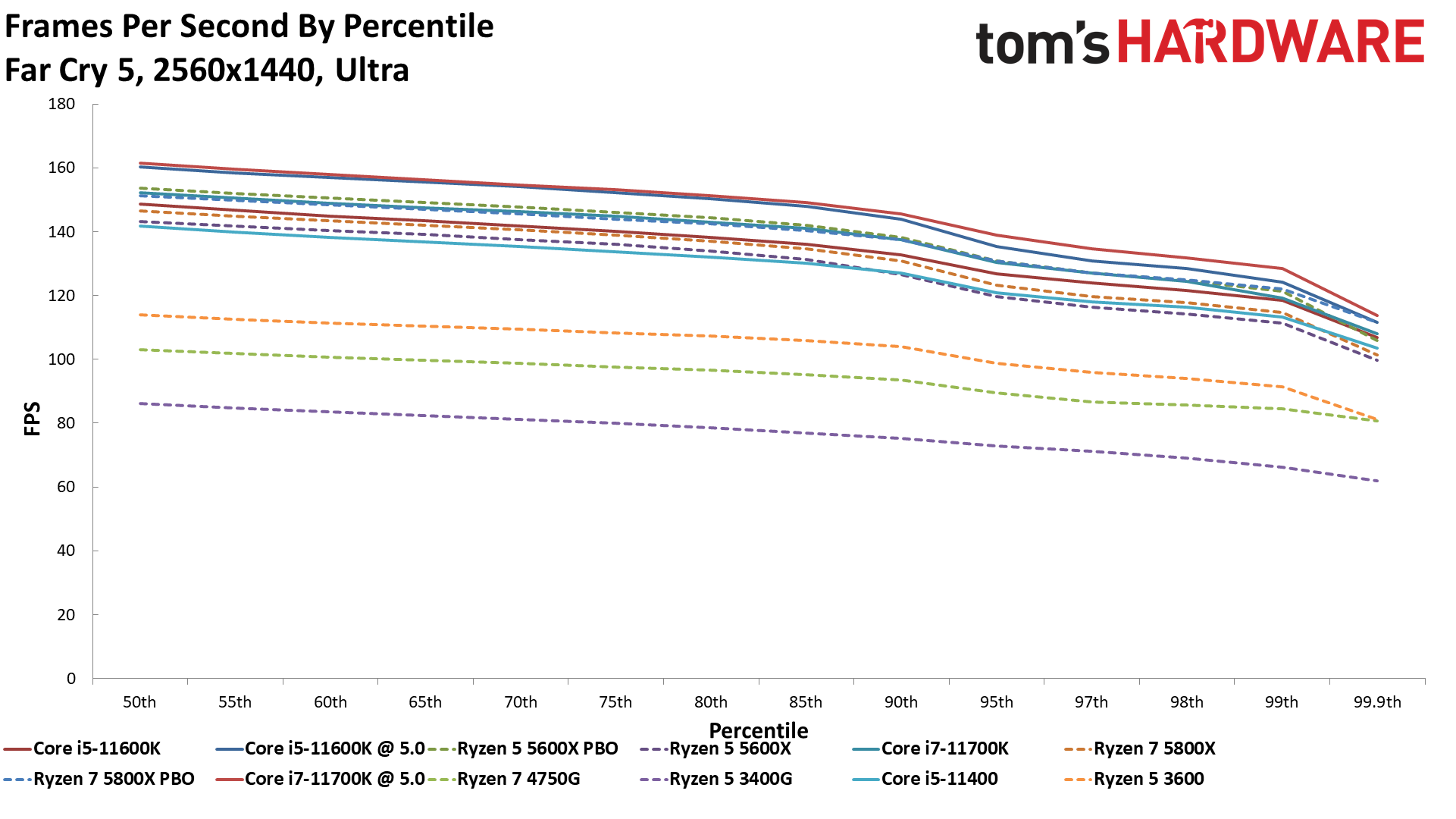
Hitman 2 on AMD Ryzen 5 5600G
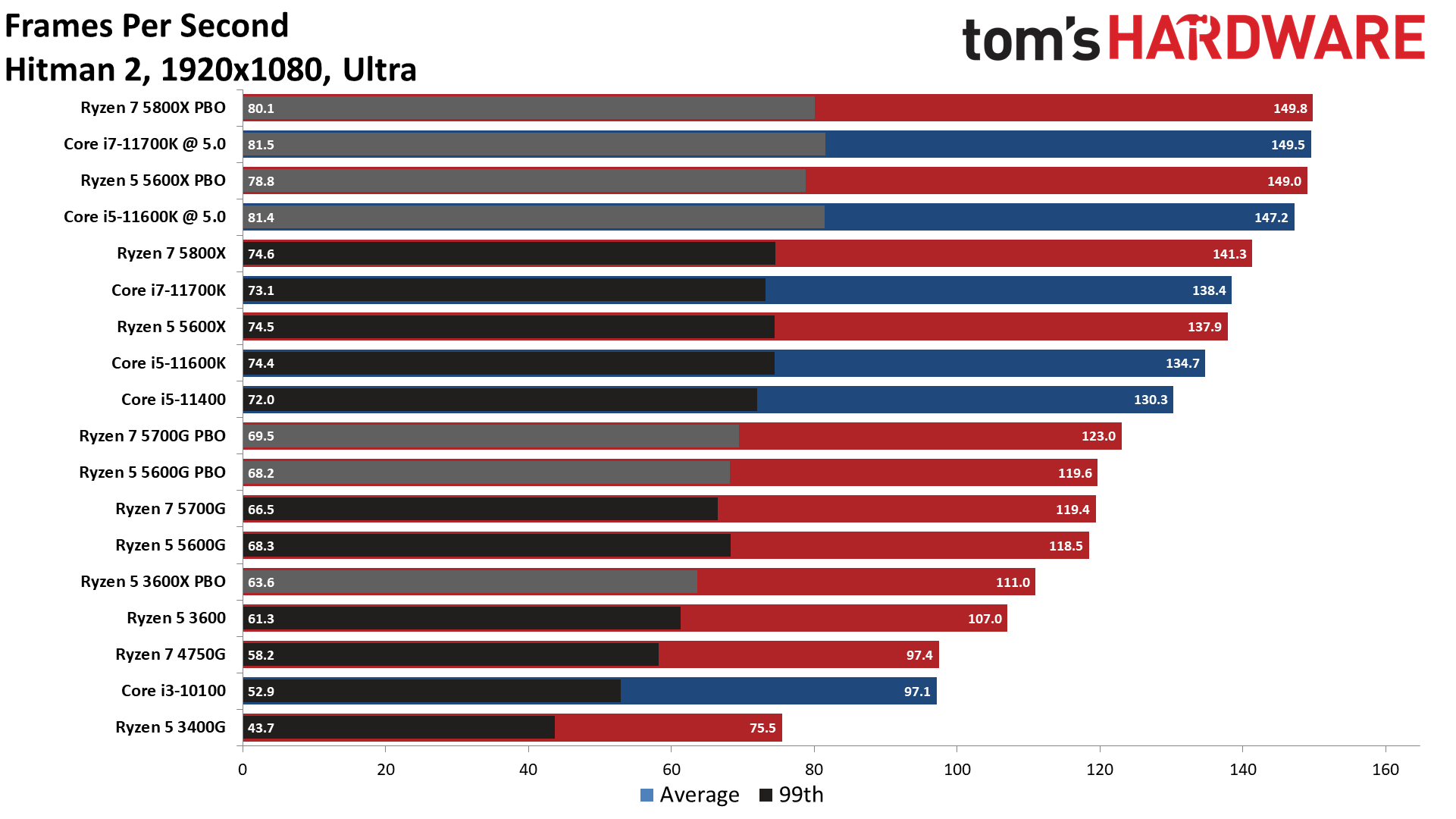
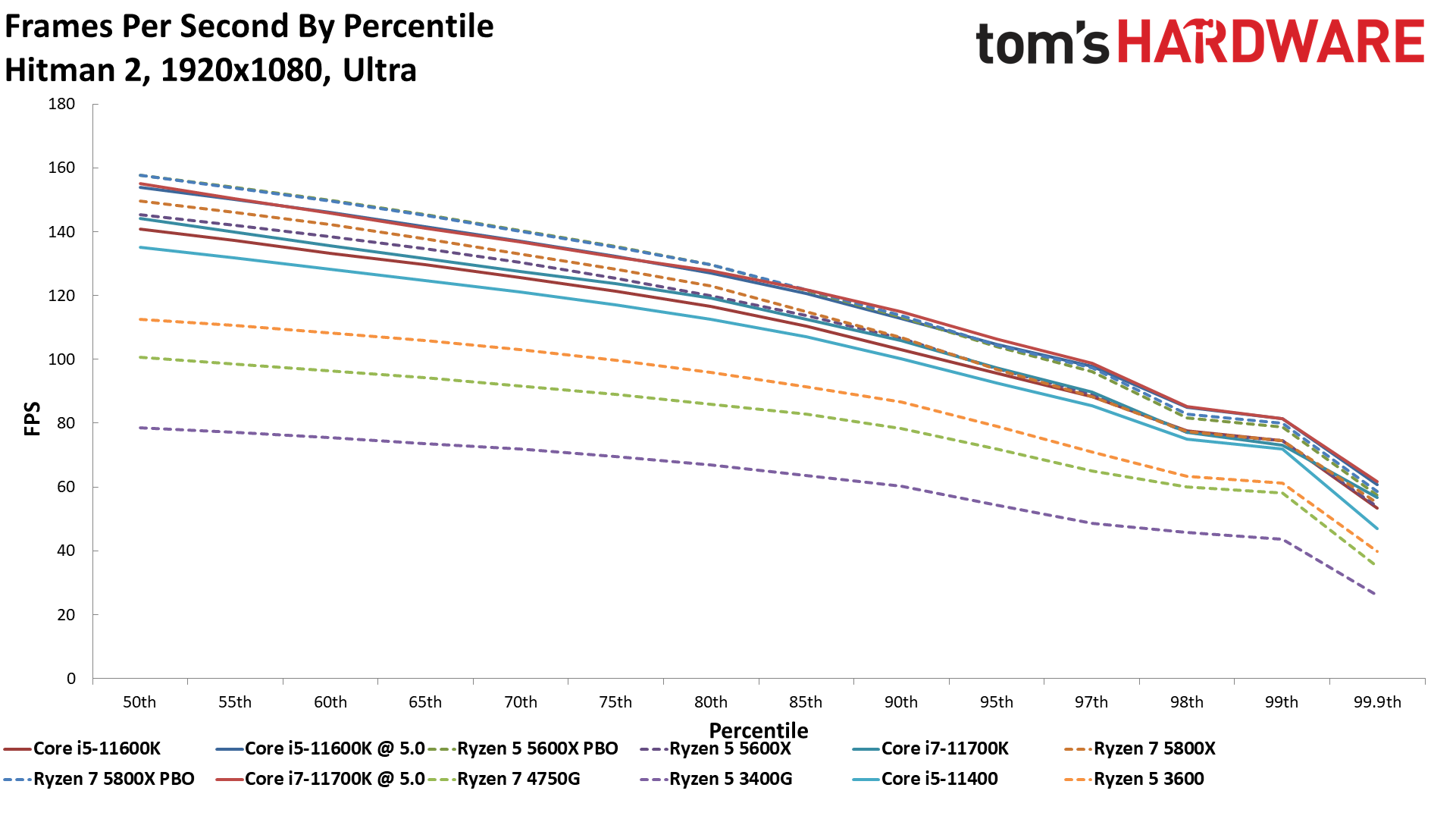
Project CARS 3 on AMD Ryzen 5 5600G
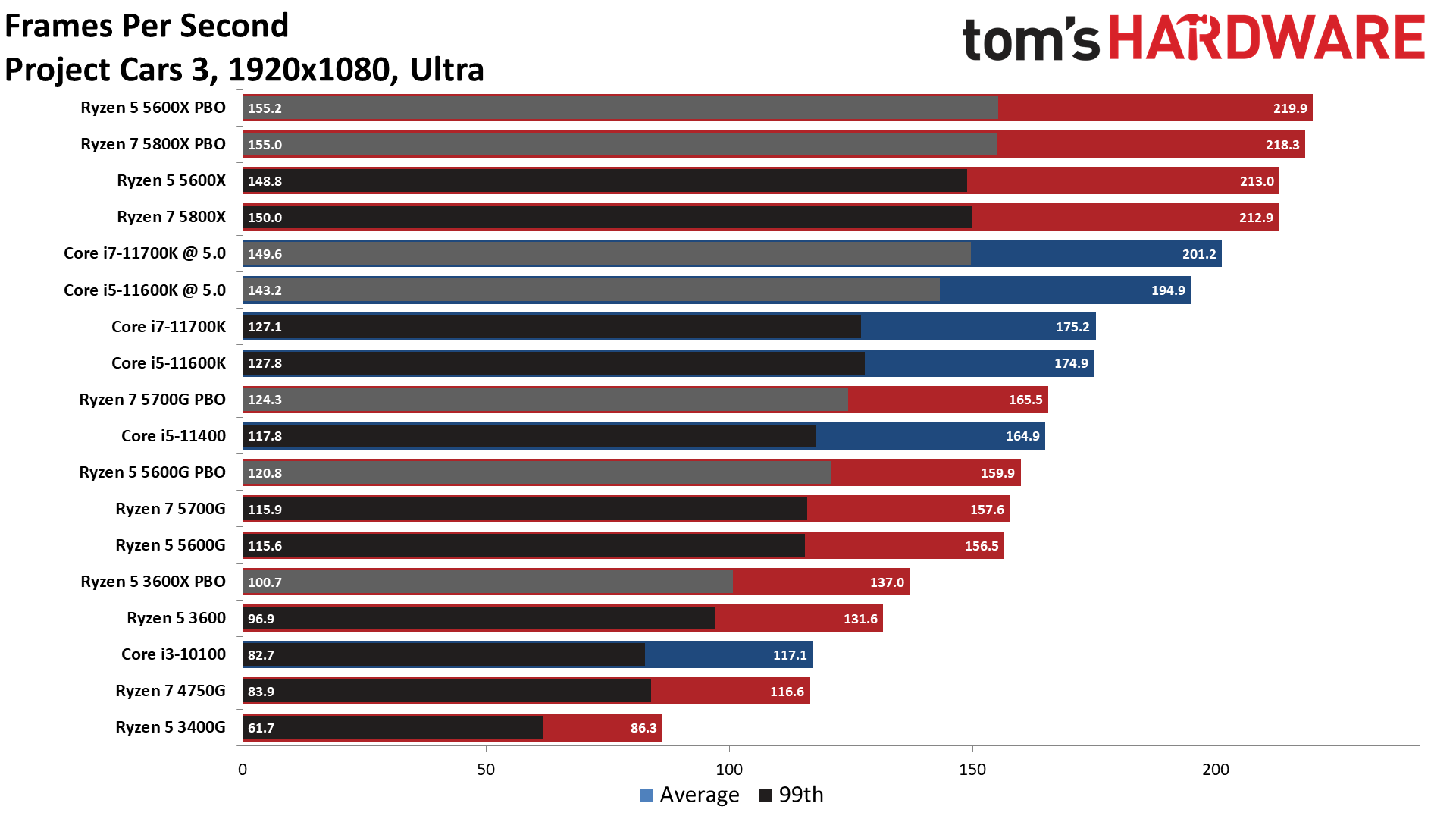
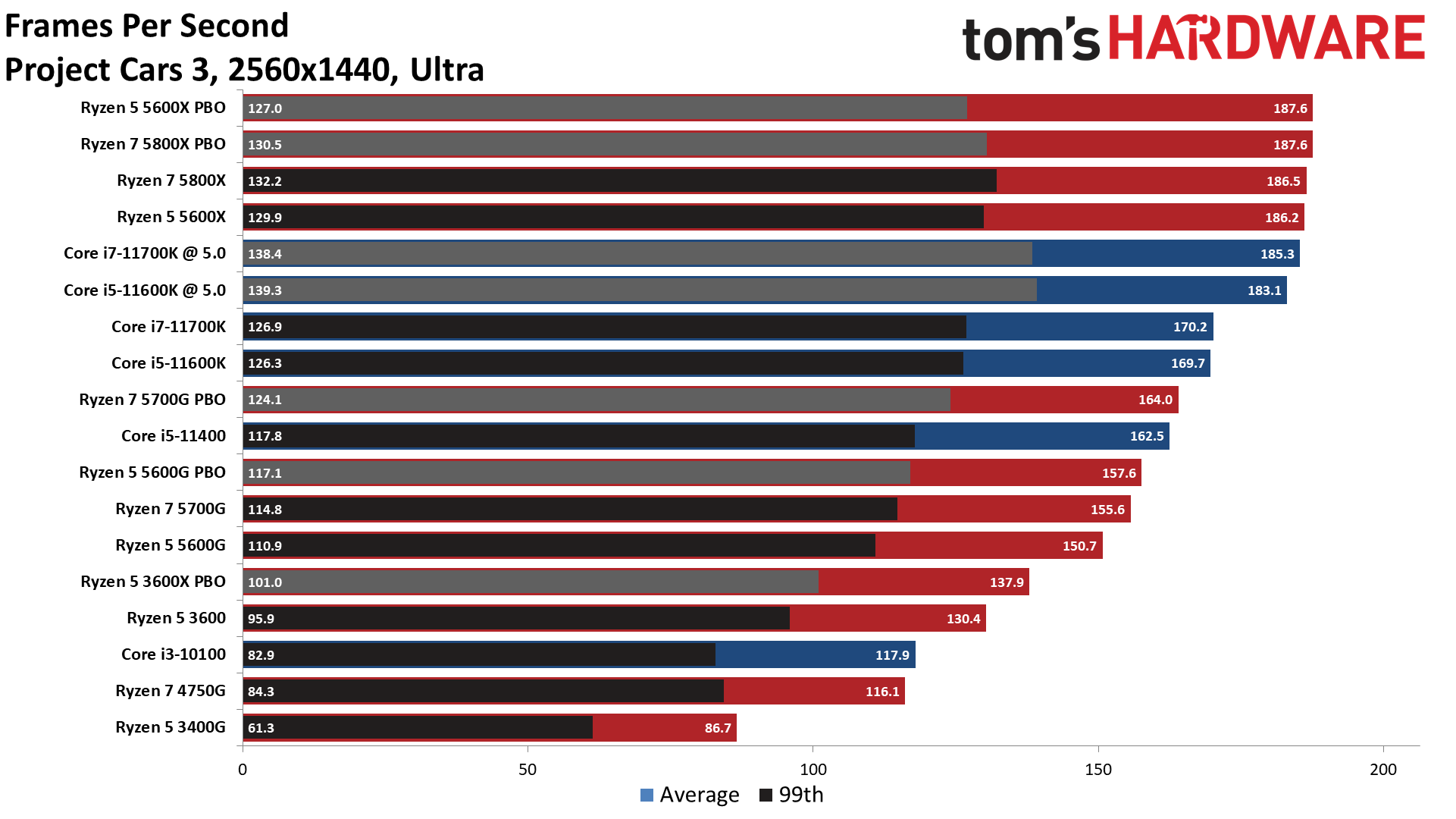
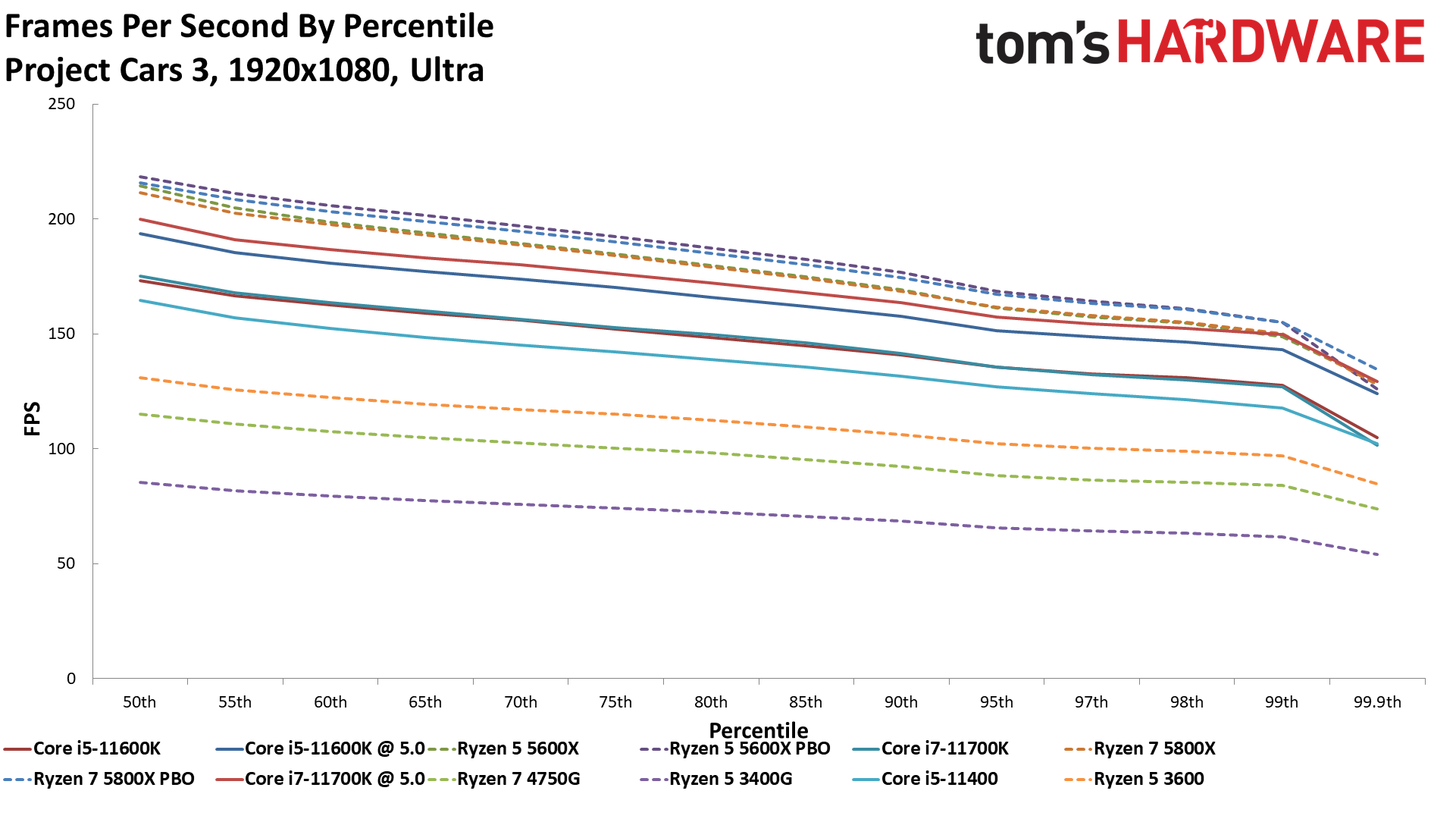
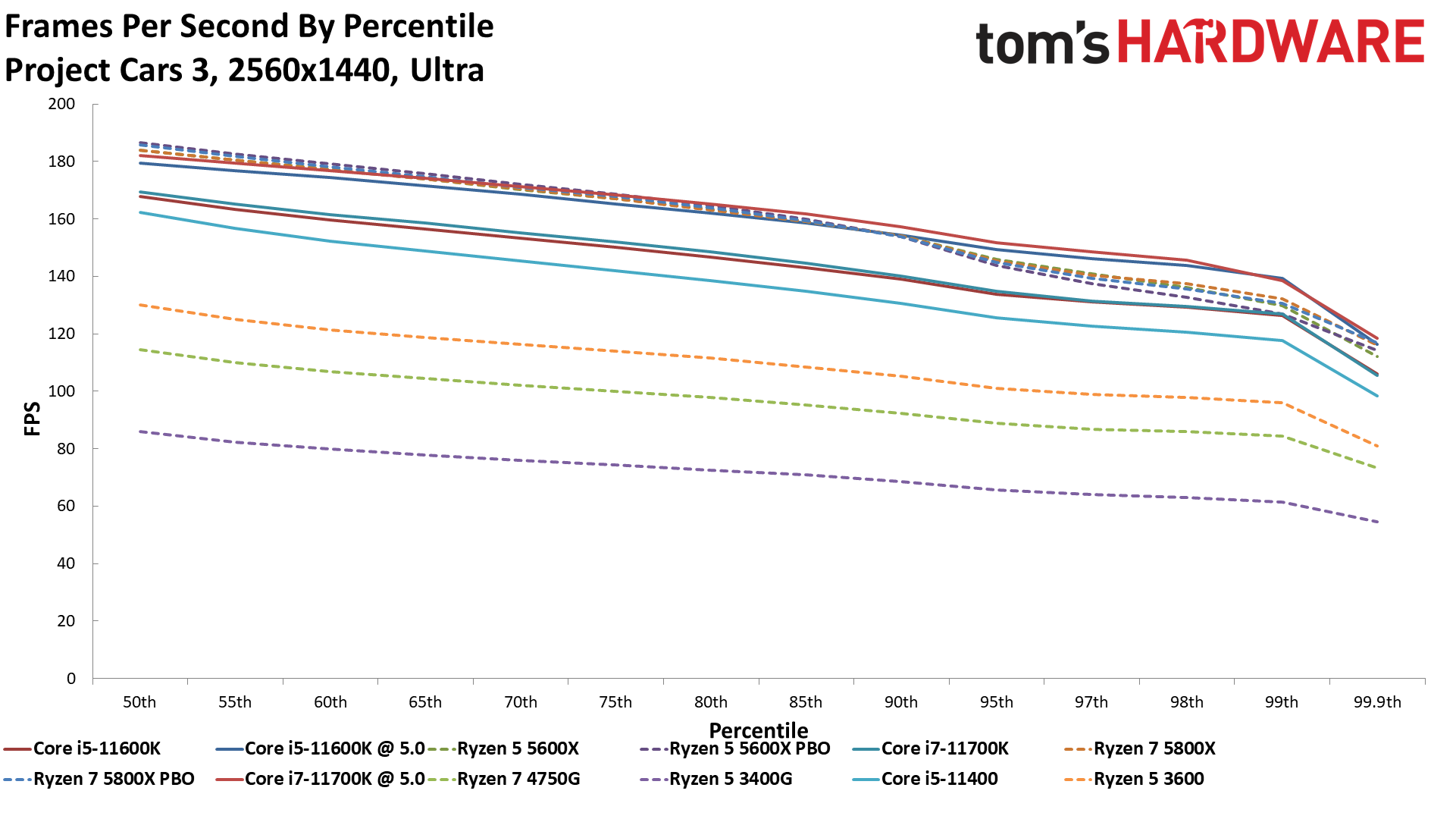
Red Dead Redemption 2 on AMD Ryzen 5 5600G
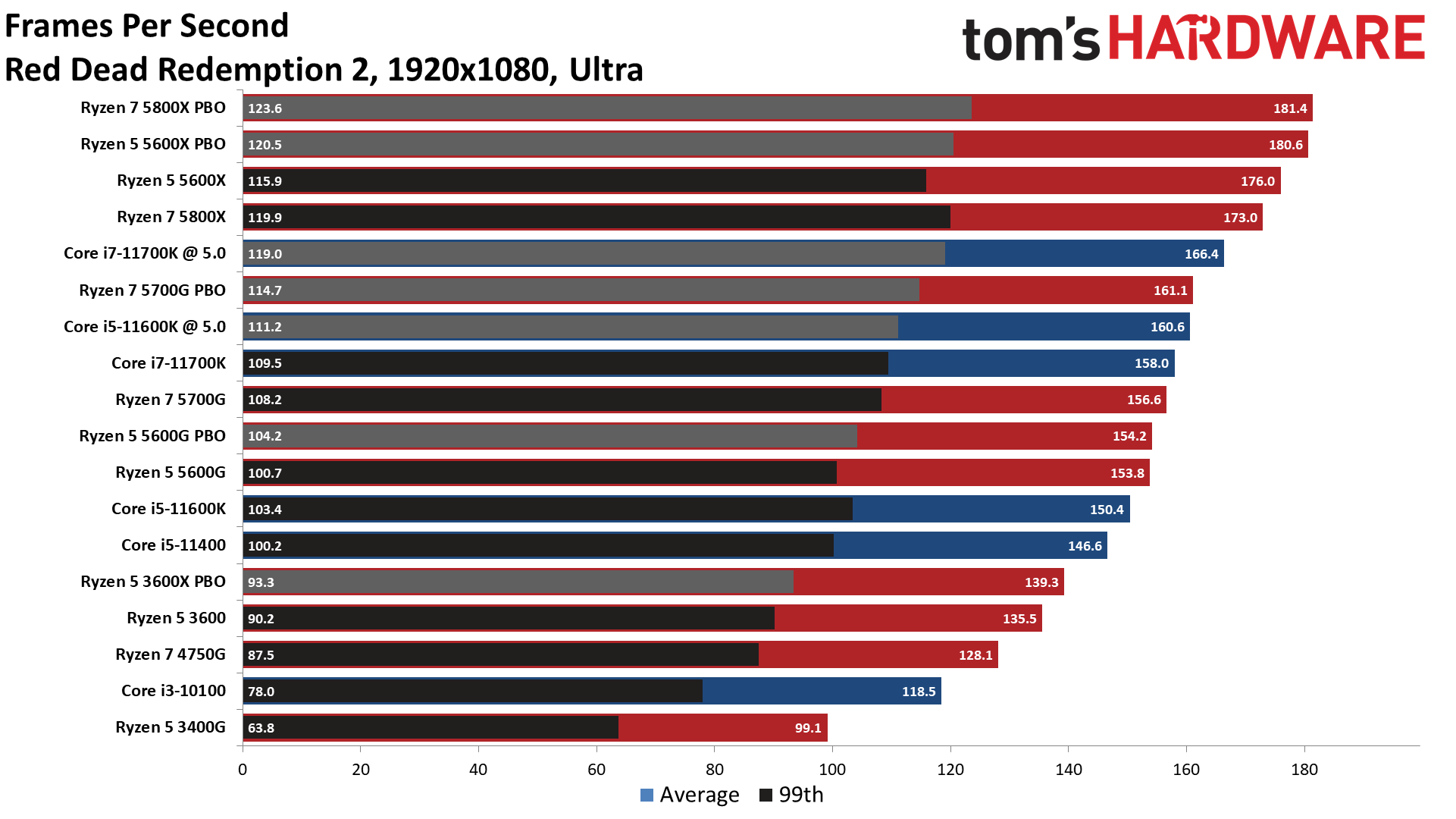
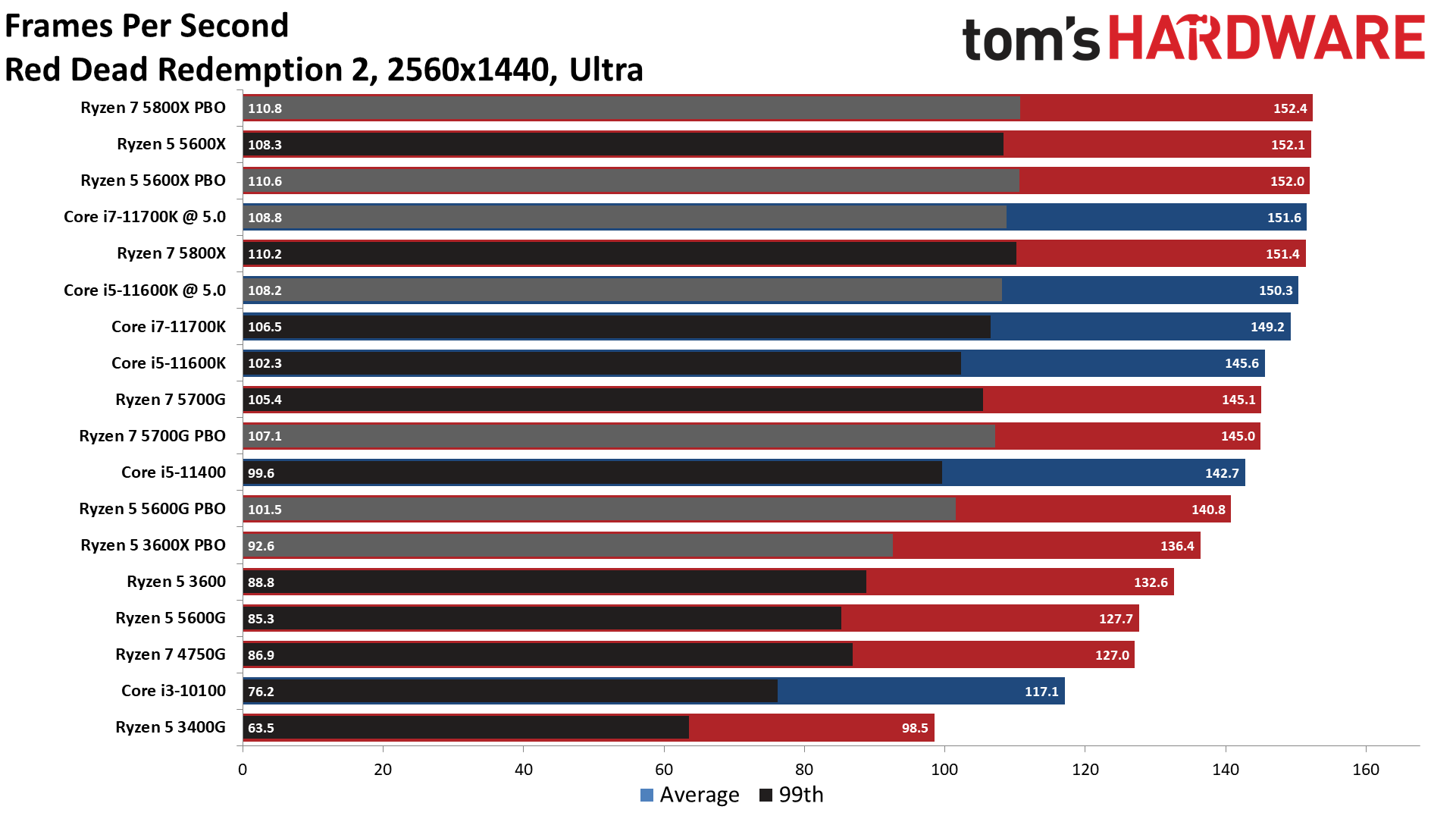
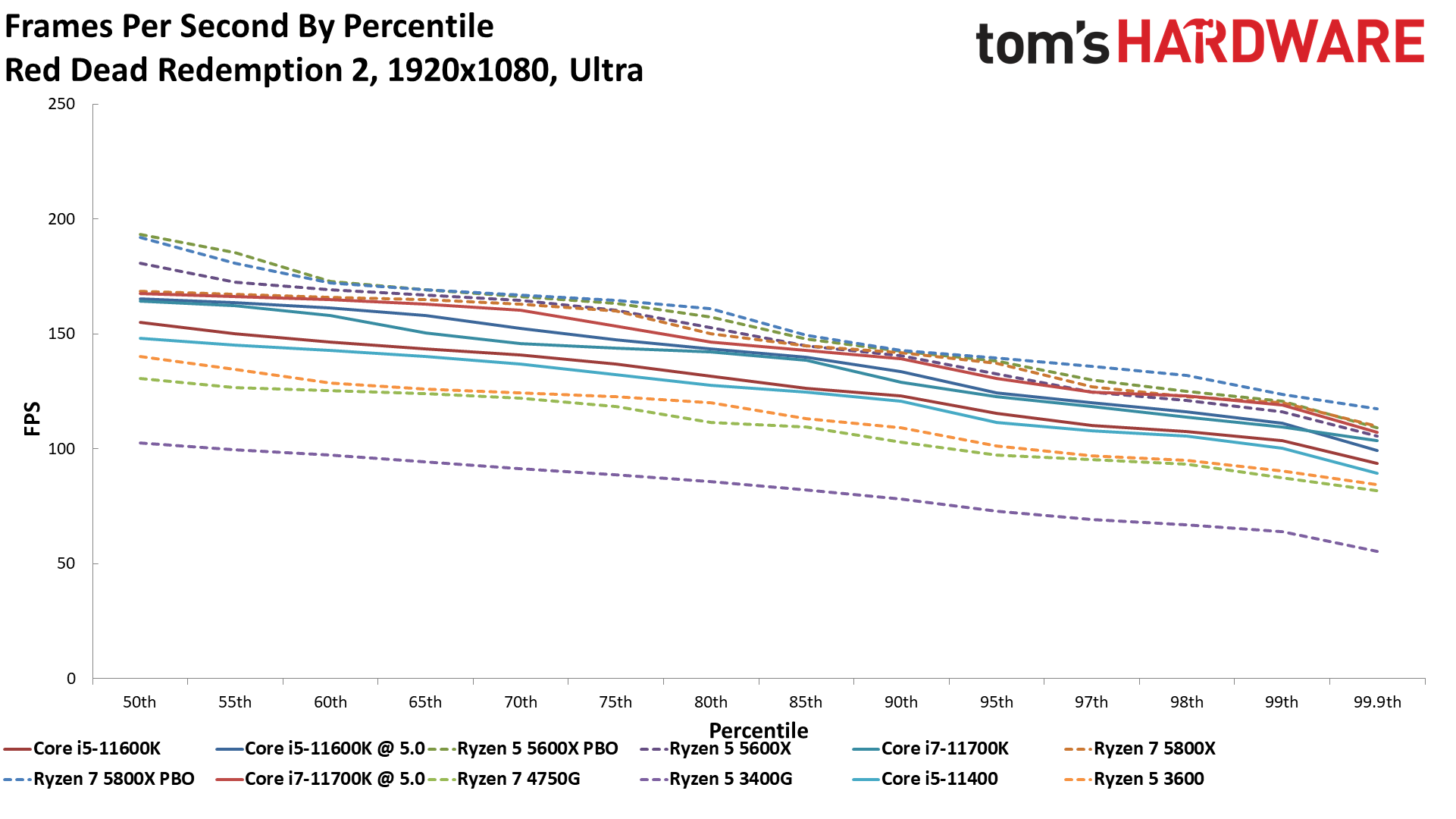
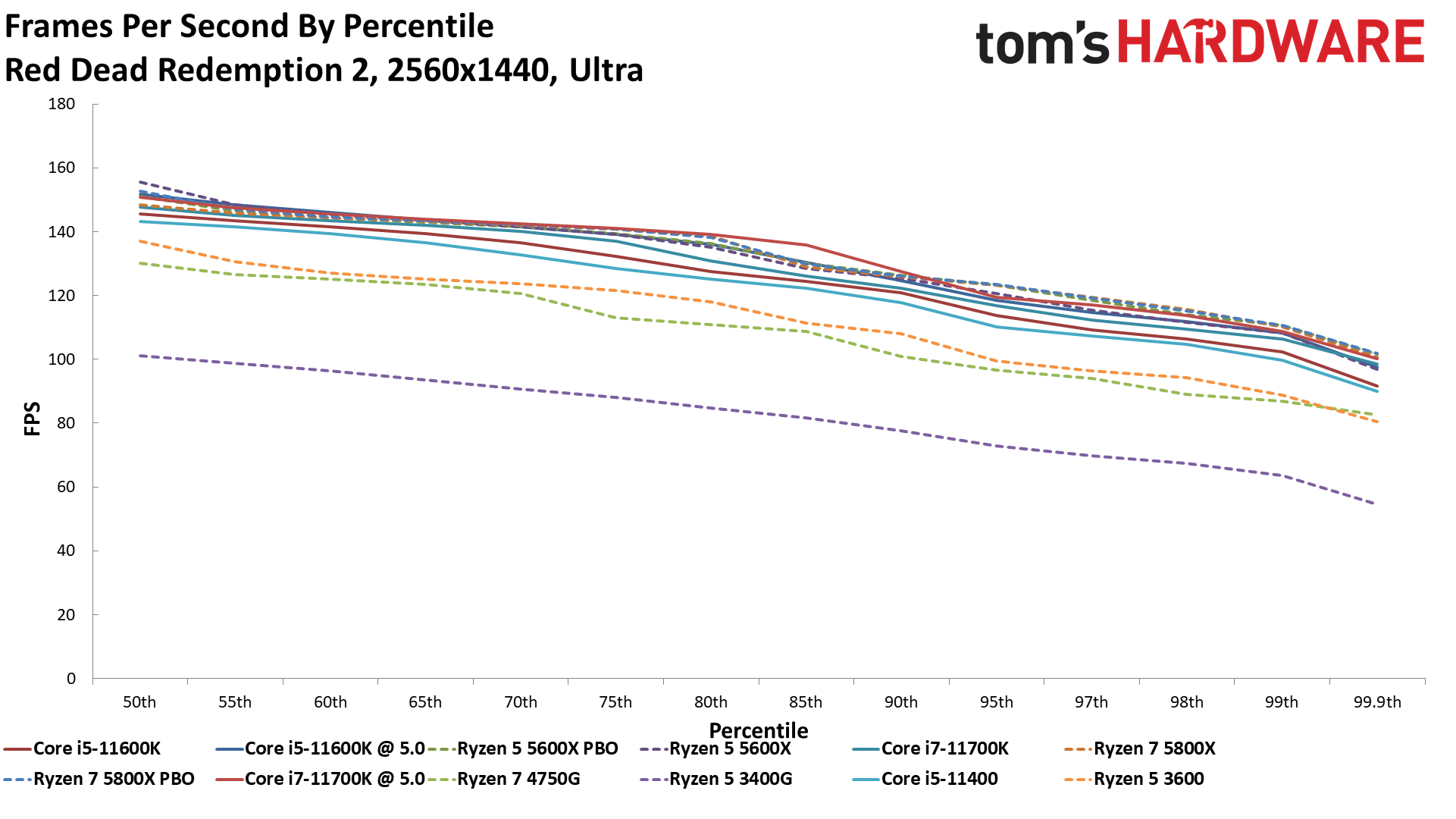
Shadow of the Tomb Raider on AMD Ryzen 5 5600G
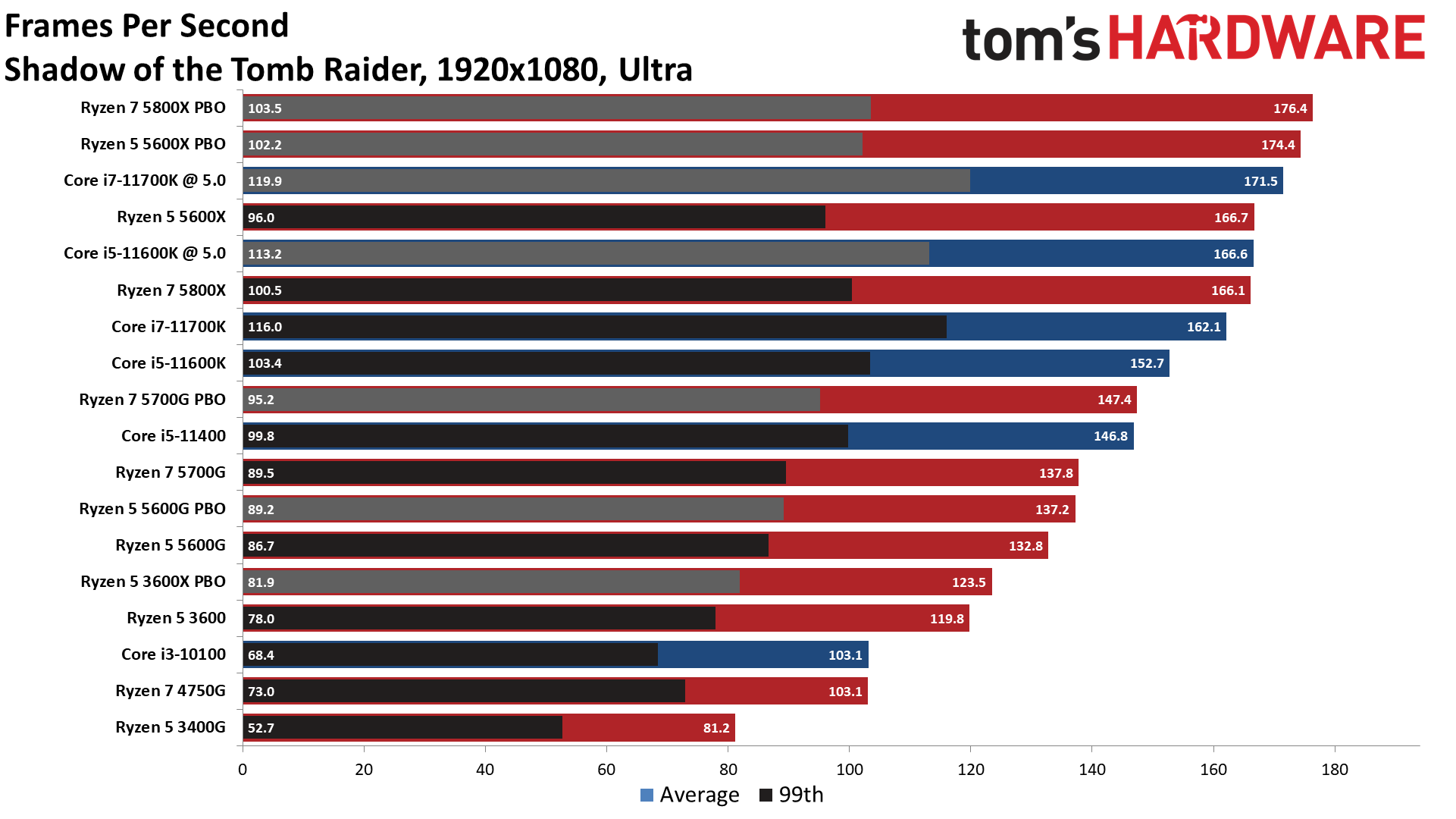
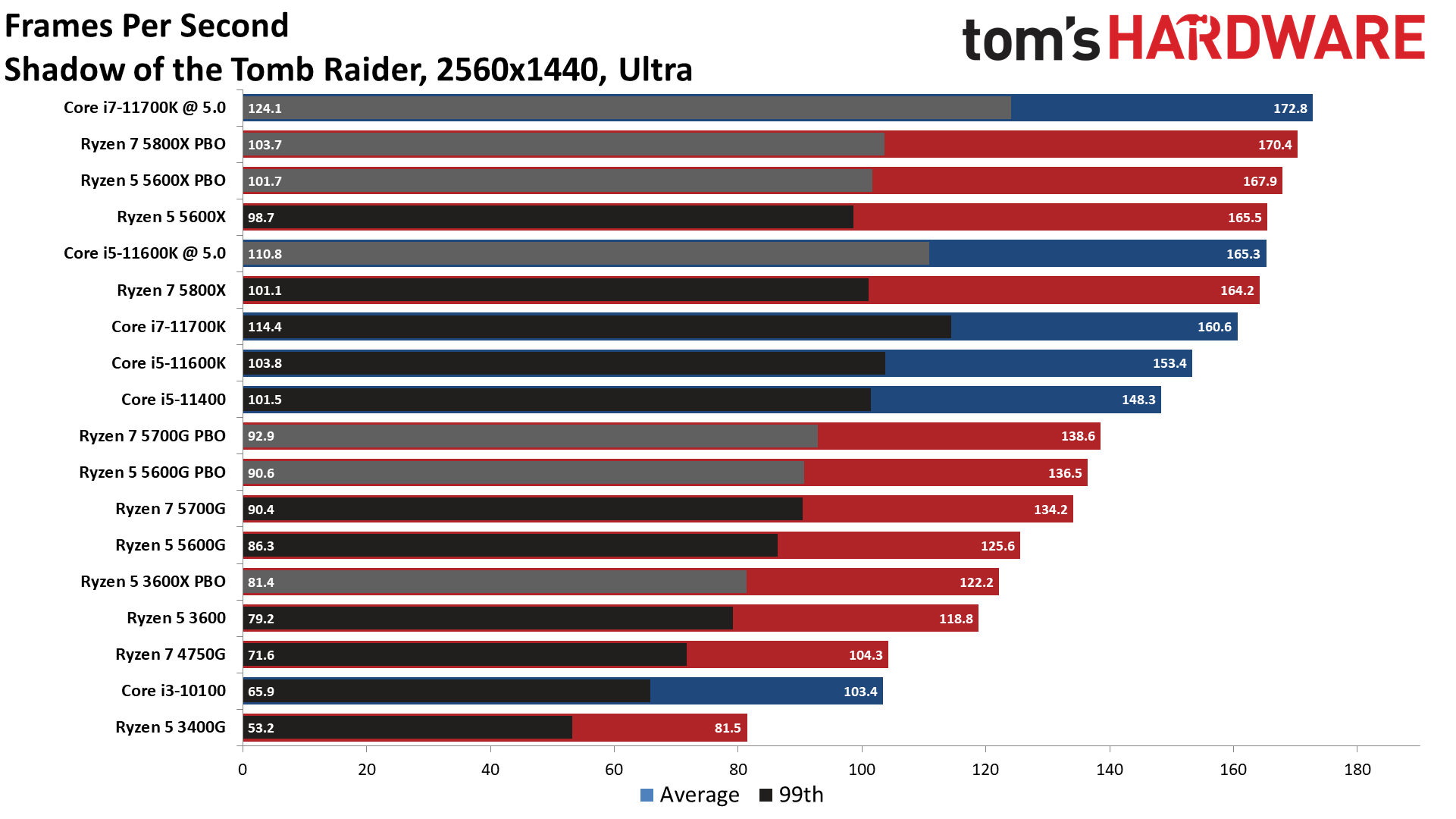
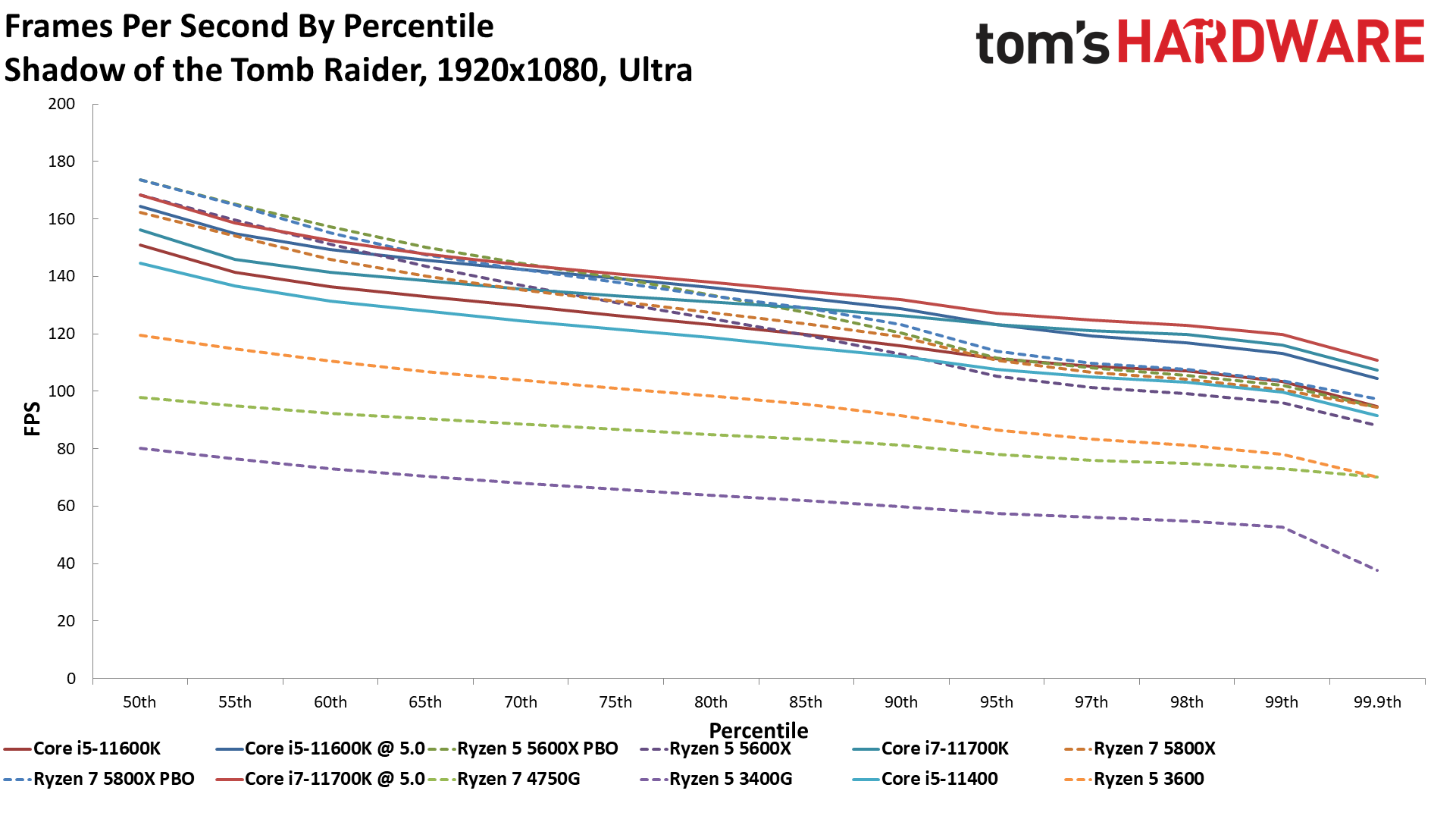

MORE: Best CPUs
MORE: CPU Benchmarks Hierarchy
MORE: All CPUs Content
Get Tom's Hardware's best news and in-depth reviews, straight to your inbox.
Current page: AMD Ryzen 5 5600G Discrete GPU Gaming Performance
Prev Page AMD Ryzen 5 5600G iGPU Gaming Benchmarks Next Page AMD Ryzen 5 5600G Application Benchmarks
Paul Alcorn is the Editor-in-Chief for Tom's Hardware US. He also writes news and reviews on CPUs, storage, and enterprise hardware.
-
hotaru251 i would personally add to the cons: VegaReply
the only problem with this chip is the vega graphics. if they had RDNA it would basically destroy Intel's lower cpu's in cost to performance.
pcie 3.0 isnt really a con at this type of chip. Its a budget chip. -
ndperson Actually it isn't Vega that is limiting their performance but their ddr4 ram. That is why they don't update beyond vega. Vega itself is limited by the speed of the ram so upgrading to rdna really wouldn't help muchReply -
twotwotwo Probably not a priority for Intel, but a TGL desktop chip (that non-OEMs can get) might make this segment more interesting, going by laptop benchmarks.Reply
That or desktop Van Gogh 🤣 but I imagine Valve has all those booked for a while. -
brodon Building an RGB matx non gaming system on a budget, and, not understanding, at 79, much of the language from the tech savvy contributors, I rely a lot on certain comments and reviews to make purchase decisions.Reply
This G series integrated graphic CPU, on a B450M DS3H v.2 mobo and Cooler Master G100M low profile cooler in a NXZT h501i case looks like a workable base configuration.
The rest of the components should be elementary. -
hrudy Most of you won't care about this issue . I was evaluating the AMD Ryzen5 5600G using an existing Linux Image based on Centos 7. I wanted to get away from Intel and try AMD. However, this processor consistently generated Panic Traps, both from the image and even from the Centos 7.9 install disk. I was using a GIGABYTE B550M DS3H . I have never seen an X86_64 part generate Linux Panic traps by just booting. Usually there are minor issues like not seeing the audio or ethernet components. And yes ithe Ryzen 5 5600G will boot from later kernels.Reply
And yes an AMD cpu without the GPU enabled works fine. I then ran into the second problem which is that even with a late Ubuntu distribution the AMD DRM gpu code didn't not want to install. I have never encountered this level of incompatibility since I've been using Linux which is around Y2k. Naturally AMD support doesn't care since it is Linux. For this level of incompatibility I might as well be running an ARM processor. -
tracker1 Replyhrudy said:... AMD support doesn't care since it is Linux. For this level of incompatibility I might as well be running an ARM processor.
It's definitely a mixed bag. I learned this using an RX 5700XT at release. I had to run beta/alpha kernels for the first 6 months or so.. Ubuntu 20.04 was really the first release with decent in the box support and even then better with later kernels. So it's not too surprising.
I also had similar issues with Intel AX wireless at that time (Around x570 Master, motherboard). And that doesn't even cover trying to get RGB in Linux working.
I've since gone back to solid, no window, case. I'm also now on an RTX 3080, as I'm running some video AI stuff that didn't do well with AMD at the time.
Nvidia drivers haven't been the best either. At least at this point it's mostly mature. Unfortunately, bleeding edge hardware and Linux means a bit of pain.
If suggest only running a very recent kernel in hardware released at least 4 months before your OS release. CentOS stable is not that. Should run a recent Fedora instead. I'm not that up on rpm distros, preferring Debian based myself. I know there are a couple newer white box RedHat options though. -
render1967 Hi, guys! I have a question. Help me, please! Does the built-in video in 5600G support analog signal via D-sub? I ask because I have a problem with this - there's no signal via D-sub. Computer configuration: CPU Ryzen 5 5600G, MB ASRock B450M Pro4-F R2.0, RAM ADATA XPG GAMMIX D10 16GB (2x8GB) DDR4 3000MHz, HDD ADATA Ultimate SSD SU650 120GB + Apacer AS2280P4 M.2 PCIe 512GB, PSU FORTRON HYPER K PRO 500W, monitor ASUS VH222SReply -
Girl_Downunder Replyhrudy said:Most of you won't care about this issue . I was evaluating the AMD Ryzen5 5600G using an existing Linux Image based on Centos 7. I wanted to get away from Intel and try AMD. However, this processor consistently generated Panic Traps, both from the image and even from the Centos 7.9 install disk. I was using a GIGABYTE B550M DS3H . I have never seen an X86_64 part generate Linux Panic traps by just booting. Usually there are minor issues like not seeing the audio or ethernet components. And yes ithe Ryzen 5 5600G will boot from later kernels.
And yes an AMD cpu without the GPU enabled works fine. I then ran into the second problem which is that even with a late Ubuntu distribution the AMD DRM gpu code didn't not want to install. I have never encountered this level of incompatibility since I've been using Linux which is around Y2k. Naturally AMD support doesn't care since it is Linux. For this level of incompatibility I might as well be running an ARM processor.
I wondered if you asked at the Ubuntu forums on this issue. I personally run Mint Mate on an old 4th gen i5 desktop. I'm looking to upgrade to "nearly" the newest (not worried about PCIe 4) and have been eyeing the 5600G due to price as well as preferring iGPU as a backup if dedicated fails. Reading this has me a bit worried. Runs off to the Mint forums to see what I find there!
